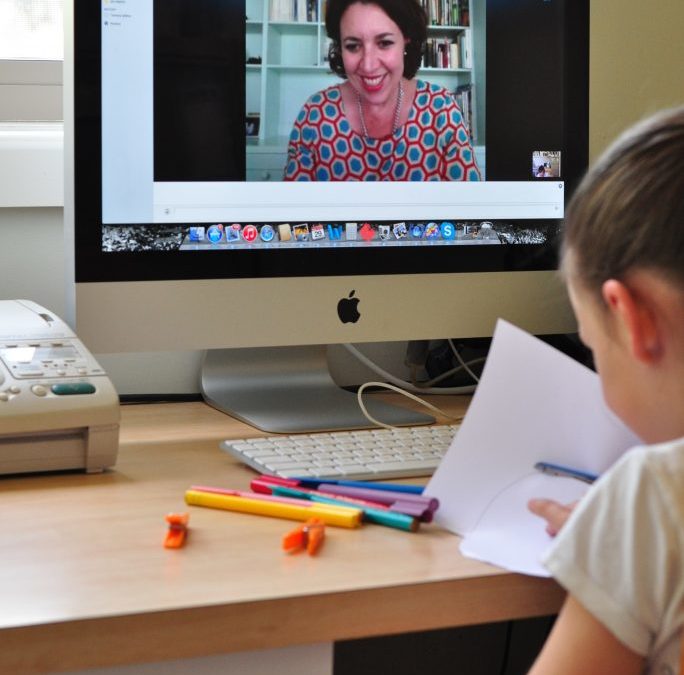How can I encourage healthy eating habits?
Too often, a child who struggles to eat is labelled and dismissed as a fussy or picky eater, but did you know feeding difficulties can be associated with several disorders?
In this article, alongside Accredited Practicing Dietitian Tiffany Ma, we address:
- Why this occurs
- The consequences of a poor diet
- And how parents can support their children to improve their eating and mealtime habits.
Why your child might refuse to eat and how a dietitian can help
Food overall is a new experience for a child. Their tastebuds are still developing, their palates are adjusting to new flavours and textures, and their food choices are often environmentally influenced, e.g. what’s available in the home or what they see parents, siblings, or friends eat.
If, on top of this, you’re navigating a diagnosis such as Avoidant/restrictive Food Intake Disorder (AFRID), Autism Spectrum Disorder (ASD), Attention-Deficit/Hyperactivity Disorder (ADHD) or Sensory Processing Disorder (SPD), then food and mealtimes might be a distressing time for both your child and yourself.
What are the consequences of poor nutrition in children?
These disorders directly make it challenging for children to eat and can cause fussiness, overwhelm and distress around mealtimes. Dietitians help you and your child navigate good nutrition and develop goals and strategies to manage diagnoses such as:
AFRID an eating or feeding disorder characterised by a continued or disrupted pattern of feeding or eating that affects the ability to meet nutritional/energy requirements. This is commonly associated with a traumatic event related to feeding/eating, e.g. choking on food with a particular texture, sensitivities to various sensory aspects such as colour, and phobia of a particular food. Consequently, this affects the child’s ability to meet their nutritional/energy needs.
Autism, ADHD and SPD can lead to sensory food aversion, an under or over-responsiveness to taste, temperature, colour, smell, appearance or texture of food. This can lead to fixation with familiar foods, limiting food intake, distress in mealtime environments, or exaggerated reactions to new foods.
Avoiding foods, limiting intake or overreliance on certain foods can lead to a nutrient-poor or nutritionally-deficient diet.
This can cause:
- Cognitive impairment
- Growth and development issues
- Gastrointestinal issues such as constipation, diarrhoea, bloating and/or stomach pain
- Low energy and fainting
- Dehydration
- Weakened bones (osteoporosis) and muscles
- Malnutrition
- Needing tube feeding, nutrition supplements and vitamin supplements
- Weight management issues
- Weakened immune system
in children.
How can dietetics/expert nutrition help with this?
As children develop, so do their habits around mealtimes. While it can take a long time for children to feel safe trying a new food or adjusting their eating habits, a dietitian can work incrementally to build their feeling of safety, confidence and competence around eating. This is done at an age and developmentally-appropriate pace, considering their medical history, preferences and goals.
We develop strategies that consider their sensory, nutritional, developmental, environmental and behavioural needs around eating, working with parents to create and nurture optimal nutrition for the child.
We work with children:
- To develop social stories around mealtimes and food
- Through food based therapy involving touching, smelling and playing with food
- Provide strategies and ways to provide your child with the appropriate texture. If the child is struggling with a particular texture, then the dietitian can suggest food and drinks with similar nutrients as per their texture preference, to ensure they’re meeting nutritional requirements to grow and develop.
Top 5 tips for parents to help your child with food
1. Division of Responsibility
As per the ‘The Satter Division of Responsibility’ in Feeding¹
Assigning responsibilities around eating encourages independence, and autonomy, building the child’s confidence and capacity at meal times.
Parents: The parent’s role is to provide the child with structure around eating. Letting them know:
- What they’ll be eating
- When they are eating
- Where they’ll be eating
Providing small serves can encourage children to ask for more, reducing the likelihood that the child will be overwhelmed and decreasing their anxiety levels. Providing the child with food choices promotes independence and empowers them through decision-making. Try to limit these to 2-3 foods (e.g. two different fruits) as this can become an overwhelming choice.
Communicate what the family is eating and do not prepare a different meal. Offer them finger foods (if required) as these can be more accessible and gives them more independence. Avoid substituting favourite foods for uneaten foods.
Children: The child is responsible for:
- How much they eat
- And whether they will eat what is provided by their parents.
This enables the child to build awareness of hunger and strategies to help self-regulate their hunger levels.
2. Have Regular Mealtimes And Positive Meal Environments
Schedule regular meals and snacks at certain times of the day (e.g. breakfast, mid-morning, lunch, after school/mid-afternoon snack and evening meal) as this helps your child to trust that food is consistently available and will help them to self-regulate their hunger.
Commonly if kids have the opportunity to snack throughout the day, they will not come to mealtime hungry and may also be less willing to try new food. Therefore, avoid allowing your child to graze on snacks throughout the day, as they will be less likely to eat the nutritious foods you’re providing them with. It’s important to limit milk and other dairy foods to two servings per day (maximum of 500ml milk per day) as this can also decrease their appetite.
Additionally, limit children’s intake of soft drinks, cordial and fruit juice as these provide little nutritional value and can impact their appetite. Try to give fluids after meals, so they don’t fill up on this.
If your child refuses a meal, you might instinctively want to provide them with an alternative, such as their favourite food; however, waiting until the next snack or meal is important. Limit snacks to 10-20 minutes and meals to 20-30 minutes as most children will eat what they are going to in this time, and it also allows your child to feel hungry for the next meal/snack. This will also help to manage your child’s stress and anxiety.
Provide the child with a pleasant and relaxed atmosphere to support your child’s nutrition. Avoid coaxing, bribing, arguing or pleading with your child to eat, as this will cause your child to feel more anxious and stressed.
Sit at a table together as a family (or at least one other family member) and use fun, brightly coloured plates, cups and straws with pictures of animated characters that they will enjoy.
Ensure that the child is seated comfortably in a chair with their back supported. Consult an occupational therapist if they require assistance with this. Provide your child with quiet activities e.g. drawing or colouring in just before meal time that they enjoy and relax them as being tired or over excited can decrease their appetite.
3. Modelling of Positive Eating/Mealtime Behaviours
Serve and eat a wide variety of foods from the five food groups both at mealtimes and snack times :
- Fruit (fresh, frozen or canned in juice)
- Vegetables (fresh, frozen or canned with reduced salt added)
- Meat/meat alternative (e.g. chicken, eggs, fish, nuts and legumes)
- Dairy/dairy alternatives (e.g. cow’s milk, soy milk, yoghurt and cheese)
- And whole grains (e.g. multigrain bread, brown rice and quinoa)
Limit saturated fat intake by avoiding fried foods and opt for healthier cooking methods such as grilling and baking. Choose low-fat dairy products. Limit fast food intake and nutrient-poor snacks such as chips and cakes and provide these as ‘occasional’ foods.
Limit sugar-sweetened beverages such as soft drinks and cordial as these do not provide any nutrition to your children. Instead, opt for water or low-fat milk.
Family members are essential in setting a good example of eating behaviour. This might involve you, as the parent or sibling, eating the food item to see how to eat it and that it is safe to eat. Talk about the properties of the food (e.g., taste, texture, colour, temperature) and show you enjoy your meal.
Avoid ‘diet’ products around the children or negatively discussing food, such as labelling food as bad as this can affect the child’s relationship with food. Model and involve the child in the family mealtime experience, such as setting the table, serving meals, eating within the allotted time as your child (10-20 minutes for a snack and 20-30 minutes for a meal), collecting cutlery and washing up.
4. Positive Eating Behaviours
Use low-pressure language when offering the food, such as “this is a carrot. It’s orange and crunchy. If you’d like to take a bite, that’s ok, and if you don’t want to this time, that’s ok too,” helps to reduce any anxiety or stress that the child may be feeling.
Avoid forcing, bribing, coercing, and emotionally blackmailing your child to eat reinforces poor eating habits and can lead them to develop further negative associations with the food, ultimately leading to them avoiding the food altogether. Furthermore, forcing children to eat can interrupt their ability to learn appropriate appetite control. Consequently, this may lead them to overeat later in life, being over the healthy weight range and at risk of developing chronic health conditions.
Avoid using phrases such as “eat your carrots or you will not get ice cream,” as this teaches children that some foods are more enjoyable than others. Provide them with plenty of positive encouragement, e.g. smiles and cuddles and praise for their attempts at eating. If the child shows unwanted behaviour offer them a suitable alternative, for example spitting their food into a napkin or bin.
5. Explore Food
Make meals and snacks fun and novel, such as arranging food in the shape of a face. Be sure to include some preferred foods for all snacks and mealtimes to encourage eating.
Try different foods often, and remember that many children need to be offered new food 20-30 times before they accept it, don’t assume they don’t like it after only a few attempts.
Provide your child with the time to explore and familiarise themselves with the new food and encourage them to become involved without the pressure of eating it. For example, making the food visible in the kitchen, encouraging the child to play with it, cook with it and smell the new food, go shopping for the new food etc., can improve comfort and familiarity with the food.
See a dietitian today for expert advice and support
Healthy eating habits are essential for a child’s physical and mental development, and a diagnosis or disorder can make mealtimes a challenging experience for the whole family.
At Therapy Connect, our dietitians work with you and your child anywhere in Australia to establish, nurture and support improved eating for optimal nutrition and your child’s health.
As NDIS’s leading online therapy provider, we can offer private or funded sessions and have 70+ highly qualified practitioners Australia-wide to support your child and family goals surrounding food. Our dietetics practitioners have availability for new clients now and would love to support your child’s growth and development today.
If you want to know, please contact us on 1300 757 806 and speak to one of our dietitians to support your child’s overall health and wellbeing.




